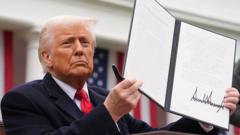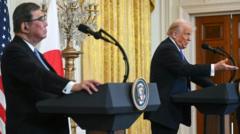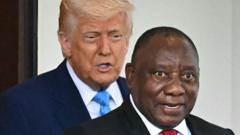Trade negotiations between the U.S. and E.U. are underway, with President Trump delaying tariffs in hopes of reaching an agreement before July 9. However, differing priorities and demands continue to challenge progress.
U.S. and E.U. Seek Trade Resolution Amid Ongoing Tariff Negotiations

U.S. and E.U. Seek Trade Resolution Amid Ongoing Tariff Negotiations
Tensions in U.S.-E.U. trade talks persist as leaders attempt to find common ground.
In a crucial moment for U.S.-European trade relations, trade talks have intensified as both sides aim for a resolution before the July 9 deadline for new tariffs. Recently, Maros Sefcovic, the E.U.’s trade commissioner, engaged in discussions with U.S. Commerce Secretary Howard Lutnick, which follow President Trump’s decision to delay imposing 50 percent tariffs on E.U. imports. This delay reflects an effort to create a constructive and focused atmosphere for negotiations.
During a phone conversation between Trump and Ursula von der Leyen, the president of the European Commission, a commission spokeswoman indicated that the dialogue provided “a new impetus for the negotiations.” The E.U. remains steadfast in its offer to potentially reduce tariffs on industrial goods to zero, while also reviewing lists of retaliatory tariffs on American exports, including products such as machinery and bourbon.
Nevertheless, significant challenges loom over these discussions. The U.S. administration has called for changes to Europe's consumption tax system and to digital regulations—proposals that European officials have openly resisted. As negotiators continue to navigate these complexities, the path toward a mutually beneficial agreement remains uncertain, highlighting the need for ongoing dialogue and compromise between the two economic powers.





















